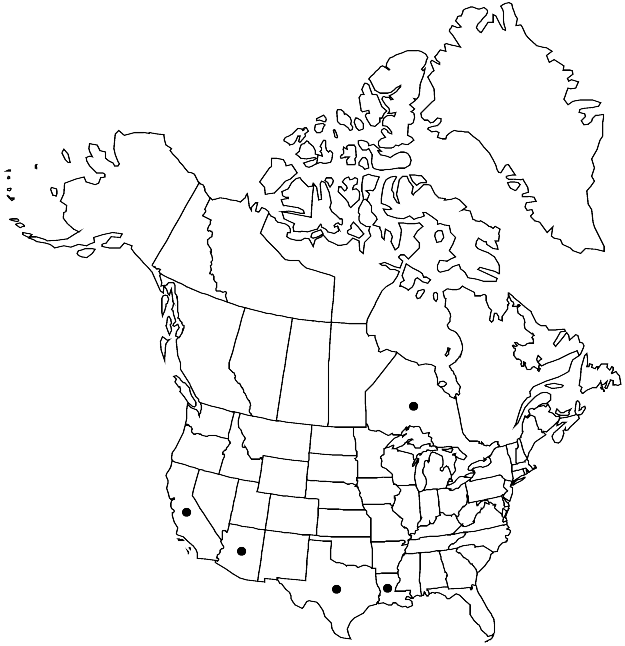Gemmabryum ruderale
Phytologia 89: 111. 2007.
Plants small, green or yellow-green, often with reddish tinge. Stems 0.4–2(–3) cm; rhizoids red-violet to deep red. Leaves loosely set, ovate-lanceolate, weakly concave, 0.4–1(–1.5) mm; base not decurrent; margins plane to weakly revolute proximally, entire to serrulate distally, limbidium absent; apex acute; costa short-excurrent, awn stout; alar cells similar to adjacent juxtacostal cells; proximal laminal cells abruptly quadrate to short-rectangular, 2–4:1; medial and distal cells (30–)40–60 × 8–14 µm, 3–4:1. Specialized asexual reproduction by rhizoidal tubers, on long rhizoids in soil, purple-red or rarely orange, irregularly spheric, (120–)150–200 µm, cells 25–50 µm, smooth. Sexual condition dioicous. [Capsule inclined or nutant, 1–3 mm].
Habitat: Damp disturbed soil, sand
Elevation: low to moderate elevations (0-1200 m)
Distribution

Ont., Ariz., Calif., La., Tex., Eurasia, n, s Africa, Atlantic Islands (Macaronesia), Pacific Islands (New Zealand).
Discussion
Gemmabryum ruderale is characterized by red-purple to violet rhizoids and relatively large, spheric, purple-red rhizoidal tubers. In the flora area, this species is probably introduced.
Selected References
None.